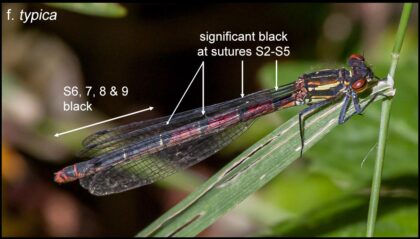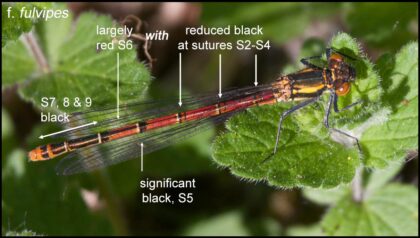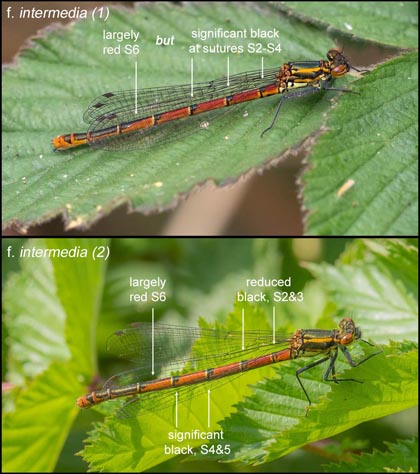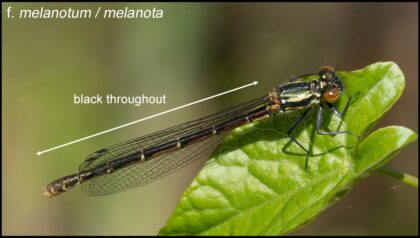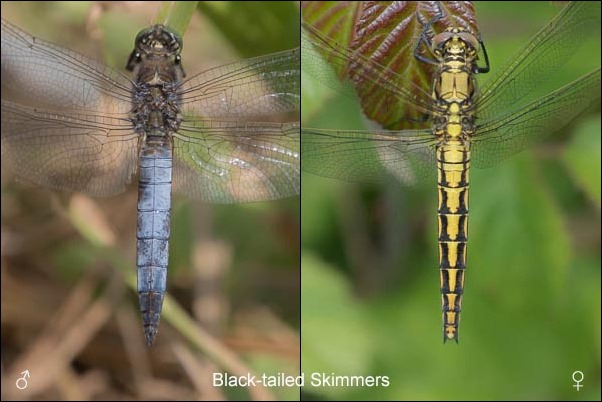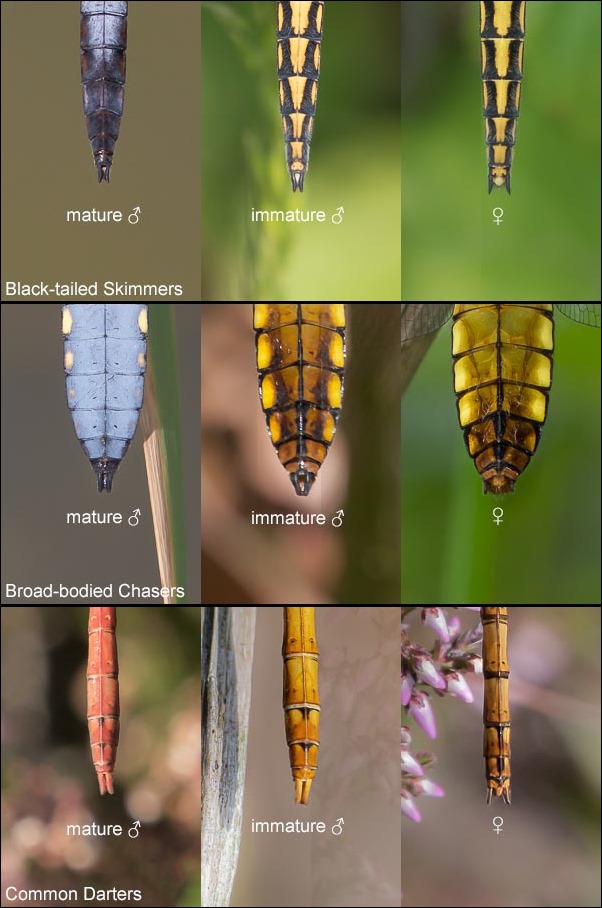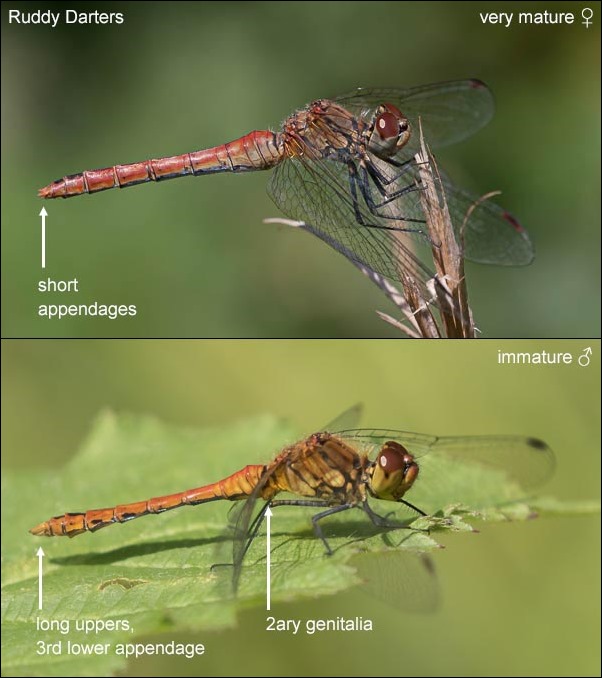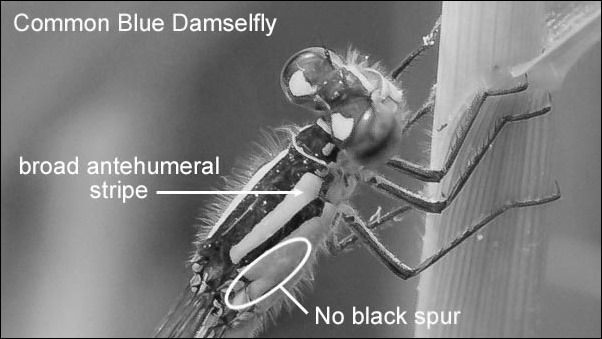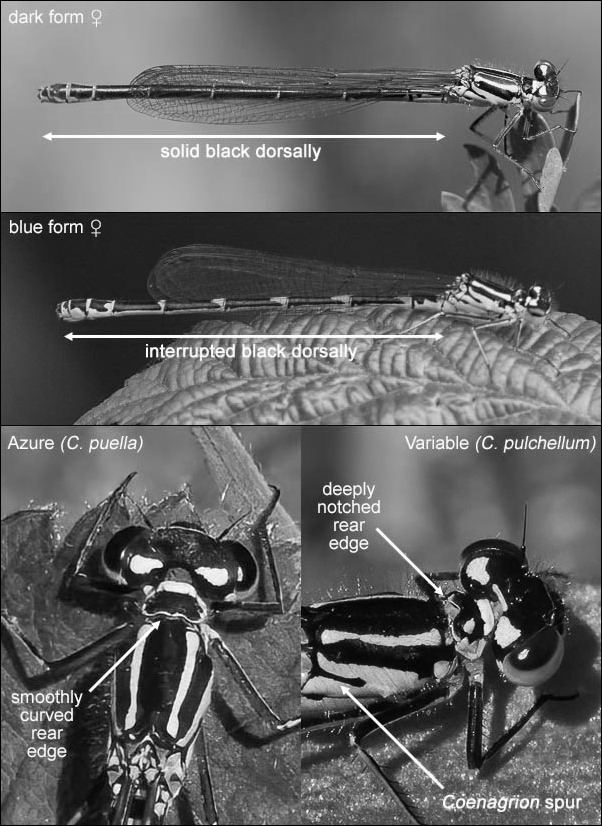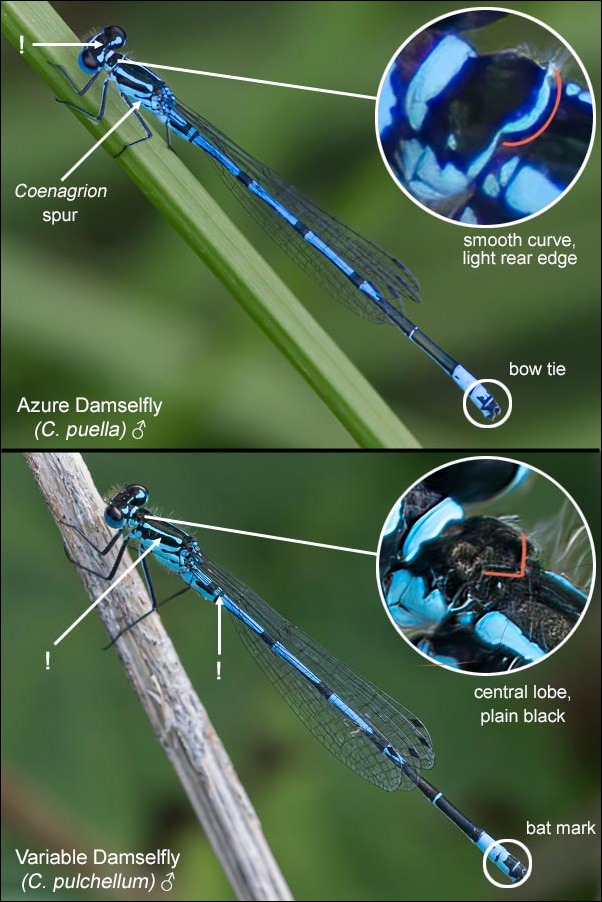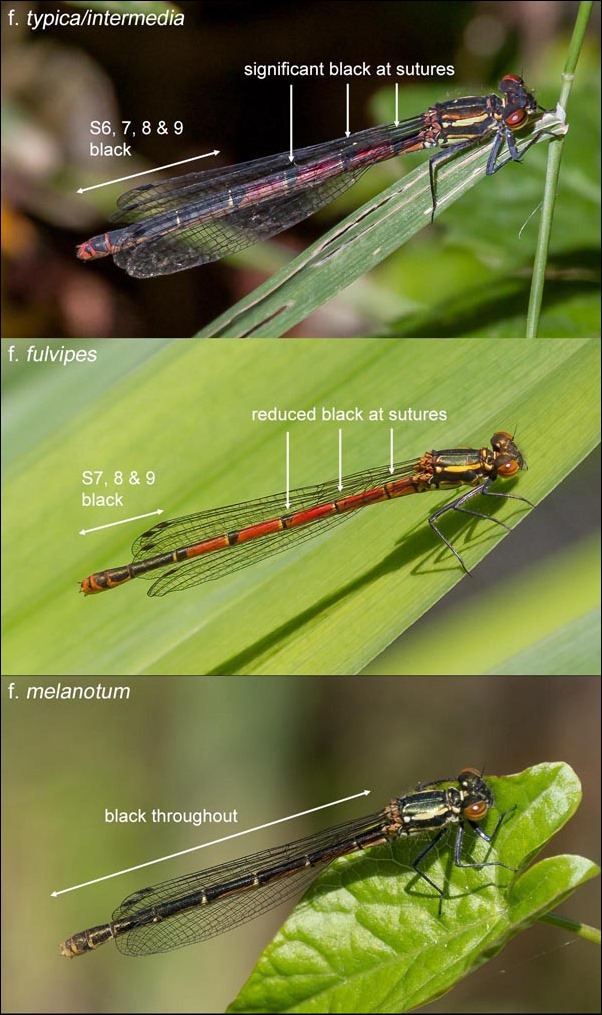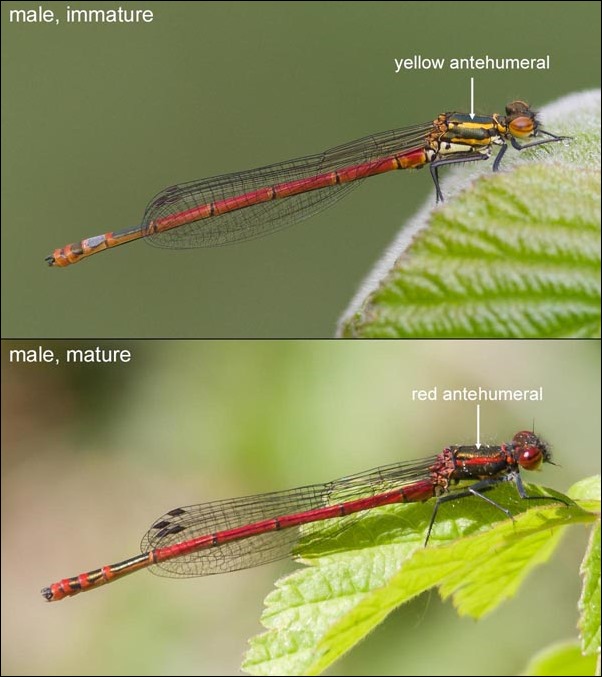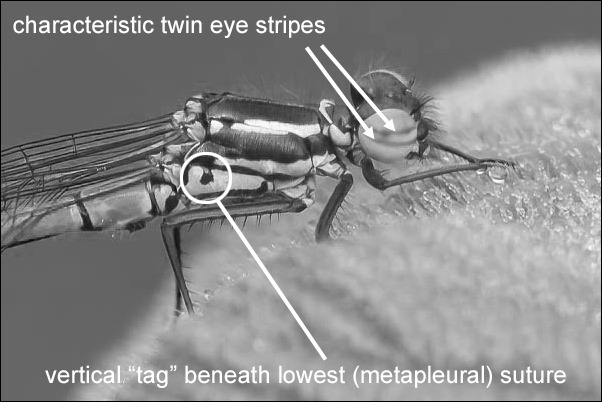For some time I have been considering joining an organized dragonfly hunting tour. In November 2018 I was disappointed not to be able to take part in a tour of Western Australia organized by Phil Benstead of Odonatours [2022 update – company now wound up] due to a clash of dates. Happily I had no such problem joining his 2-week tour of eastern Australia in 2019.
Phil does an impressive amount of research when planning his trips and had compiled an initial itinerary beginning in Brisbane, then heading south into New South Wales before tacking back just north of Brisbane into parts of south-east Queensland. The best laid plans of mice and men were foiled late in the day by an early outbreak of severe wild bush fires which became international news and caused all the NSW National Parks to be closed. Phil did an incredible job of re-planning to stay in Queensland, which was less severely hit by fires, forsaking NSW and heading further north of Brisbane instead. With a huge amount of species under his belt, Phil tends to concentrate on rarer endemics.
 The kicker for me was that this was one of Phil’s so-called recce trips, which are designed to be investigative with a view to building a more formal tour based on the knowledge gained. His recce trips use a single vehicle with a maximum of four attendees, himself included. In this case there were just three of us. The recce trip format is to travel light and cheap by camping in small tents, which we were to take with us. Phil loves camping. I, on the other hand, hadn’t slept on the ground for more than 35 years so had a little apprehension but I did have fun auditioning small back-packing tents and equipment. I settled on an OEX Phoxx-II from Go Outdoors, which seemed to be comfortably long enough for a 6-footer and which cost a mere £75. It is billed as a potential 2-person tent but please, get real, though I did find it quite adequate for one, with essential overnight accessories arrayed around me. A self-inflating sleeping mat and a season-2 sleeping bag completed my kit. I actually grew quite fond of my little tent and was sad when it sustained some damage on its very last night.
The kicker for me was that this was one of Phil’s so-called recce trips, which are designed to be investigative with a view to building a more formal tour based on the knowledge gained. His recce trips use a single vehicle with a maximum of four attendees, himself included. In this case there were just three of us. The recce trip format is to travel light and cheap by camping in small tents, which we were to take with us. Phil loves camping. I, on the other hand, hadn’t slept on the ground for more than 35 years so had a little apprehension but I did have fun auditioning small back-packing tents and equipment. I settled on an OEX Phoxx-II from Go Outdoors, which seemed to be comfortably long enough for a 6-footer and which cost a mere £75. It is billed as a potential 2-person tent but please, get real, though I did find it quite adequate for one, with essential overnight accessories arrayed around me. A self-inflating sleeping mat and a season-2 sleeping bag completed my kit. I actually grew quite fond of my little tent and was sad when it sustained some damage on its very last night.
Australia is a large land with very varied habitats and boasts over 320 species of odonata. My only previous experience with dragons in Oz was in November 2017 and had been very ad hoc – find ‘em as and when you can – since the main purpose of that trip was to visit relatives and friends. Prior to this 2019 trip, my Australian species count was just about 12. I was trusting that this would increase it dramatically. Some Australian species are shared with Southeast Asia, of which I also have some experience, so not all were likely to be new to me but the majority certainly would be. Since the common names differ between Australia and Asia, I use the Australian vernacular names here.
Before the camping trip proper began, I spent three days in Brisbane with the third tour member, Roy, before Phil arrived. The highlight of these three days for me was certainly the Mount Coot-tha Botanical Gardens. Once the camping trip itself began, as well as surviving sleeping on the ground whilst avoiding bush fires and Australia’s famed poisonous critters, I managed to photograph a total of 55 species, 43 of which were new to me. Given the difficult lighting conditions in some of the forest habitats, some my photographs were less than brilliant but they do, at least, act as a record.
The itinerary was quite full-on. With temperatures often exceeding 35°C, both we and the odos were active early; we began most often by 06:30, spending up to 7 hours a day in the field searching multiple habitats. In most cases, I would have preferred to have been able to spend longer getting a greater number of more varied pictures of each species but time frequently did not allow. Some species were encountered more often and naturally received better treatment. Even though I’d have liked to slow it down a bit, I would certainly consider this format again. I may have a harder time with a larger group of, say, 8 or 10 people, all trying to surround and photograph the same subject.
Given 2+ weeks covering 33 habitats spread over 3000kms of Queensland, this is necessarily a lengthy report. I didn’t really want to split it into chapters, though.
Here’s my usual map of sites visited and species encountered.
Tingalpa Reservoir @ JC Trotter Memorial Park, 17 Nov [#1]
We entered through JC Trotter Memorial Park but the odonata were at the edge of an arm of Tingalpa Reservoir, which is very large though it was clearly shrinking and showing muddy banks. We had to fight our way through a lot of bush to gain access to the water’s edge.  Once at the water’s edge, I found four species including both male and female of Wandering Pennant (Macrodiplax cora), so I was off to a reasonable start. The remaining three were old friends from SE Asia.
Once at the water’s edge, I found four species including both male and female of Wandering Pennant (Macrodiplax cora), so I was off to a reasonable start. The remaining three were old friends from SE Asia.
- Pseudagrion microcephalum (Blue Riverdamsel)
- Macrodiplax cora (Wandering Pennant)
- Orthetrum sabina (Slender Skimmer)
- Diplacodes trivialis (Chalky Percher)
Minnippi Parkland, 18 Nov [#2]
 We went here to investigate a stretch of Bulimba Creek but that proved to be difficult to access; all we could see there was Blue Riverdamsel (Pseudagrion microcephalum) though one posed well enough for a macro lens to be deployed. So we wandered further through the park and found a water body which was much more productive. The map point indicates the water body. Cruising around above was a Common Glider (Tramea loewii), which was a new species to me, though all I could get was a fuzzy, distant flight shot from beneath.
We went here to investigate a stretch of Bulimba Creek but that proved to be difficult to access; all we could see there was Blue Riverdamsel (Pseudagrion microcephalum) though one posed well enough for a macro lens to be deployed. So we wandered further through the park and found a water body which was much more productive. The map point indicates the water body. Cruising around above was a Common Glider (Tramea loewii), which was a new species to me, though all I could get was a fuzzy, distant flight shot from beneath.
- Ischnura heterosticta (Common Bluetail)
- Pseudagrion microcephalum (Blue Riverdamsel)
- Xanthagrion erythroneurum (Red & Blue Damsel)
- Macrodiplax cora (Wandering Pennant)
- Orthetrum caledonicum (Blue Skimmer)
- Tramea loewii (Common Glider)
Paradise Road Park, 18 Nov [#3]
 This was nothing startling, just a small creek we happened across whilst driving about. It did yield my first sighting of a female Scarlet Percher (Diplacodes haematodes), though.
This was nothing startling, just a small creek we happened across whilst driving about. It did yield my first sighting of a female Scarlet Percher (Diplacodes haematodes), though.
- Ischnura heterosticta (Common Bluetail)
- Diplacodes haematodes (Scarlet Percher)
Mount Coot-tha Botanical Gardens, Brisbane, 19 Nov & 03 Dec [#4]
 Finding much on my first two days in Brisbane whilst waiting for our main tour to begin was a bit of a struggle. That all changed with a visit to these wonderful botanical gardens which were teaming with odonata life. Frankly, for one with only a small collection of Ozzie Odos, this was my favourite pace of the trip. It kept me entertained for the whole day and, I hoped, would do so again at the back end of the trip. Not only did it have great odonata but it also has some of the best coffee I’ve tasted together with decent food and cold Furphy beer. It was a great place for a pair of Rhyothemis species, Yellow-striped Flutterer (Rhyothemis phyllis) and Graphic Flutterer (Rhyothemis graphiptera) which I find captivating.
Finding much on my first two days in Brisbane whilst waiting for our main tour to begin was a bit of a struggle. That all changed with a visit to these wonderful botanical gardens which were teaming with odonata life. Frankly, for one with only a small collection of Ozzie Odos, this was my favourite pace of the trip. It kept me entertained for the whole day and, I hoped, would do so again at the back end of the trip. Not only did it have great odonata but it also has some of the best coffee I’ve tasted together with decent food and cold Furphy beer. It was a great place for a pair of Rhyothemis species, Yellow-striped Flutterer (Rhyothemis phyllis) and Graphic Flutterer (Rhyothemis graphiptera) which I find captivating.
 We did call in again and it did not disappoint, though I didn’t add to the species count. I did, however, at last manage to get a decent shot of a Common Glider (Tramea loewii).
We did call in again and it did not disappoint, though I didn’t add to the species count. I did, however, at last manage to get a decent shot of a Common Glider (Tramea loewii).
- Austroagrion watsoni (Eastern
Billabongfly)
- Nososticta solida (Orange Threadtail)
- Xanthagrion erythroneurum (Red & Blue Damsel)
- Crocothemis nigrifrons (Black-headed Skimmer)
- Diplacodes haematodes (Scarlet Percher)
- Hemicordulia australiae (Australian Emerald)
- Hydrobasileus brevistylus (Water Prince)
- Orthetrum caledonicum (Blue Skimmer)
- Orthetrum sabina (Slender Skimmer)
- Orthetrum villosovittatum (Fiery Skimmer)
- Tramea loewii (Common Glider)
- Rhyothemis phyllis (Yellow-striped Flutterer)
- Rhyothemis graphiptera (Graphic Flutterer)
- Ictinogomphus australis (Australian Tiger)
Albany Lake Park, Sippy Downs, 20 Nov [#5]
 Following our initial supermarket foraging mission for supplies, I found our first odonata stop on the road trip proper a bit of a surprise in that it was an urban park surrounded by a large development of reasonably well appointed looking houses. Driving though a modern estate to get to our habitat felt a little odd, though I suppose it shouldn’t have. Having had an early start it was certainly worth it as it produced a couple of new species, including the delightfully diminutive Pygmy Percher (Nannodiplax rubra).
Following our initial supermarket foraging mission for supplies, I found our first odonata stop on the road trip proper a bit of a surprise in that it was an urban park surrounded by a large development of reasonably well appointed looking houses. Driving though a modern estate to get to our habitat felt a little odd, though I suppose it shouldn’t have. Having had an early start it was certainly worth it as it produced a couple of new species, including the delightfully diminutive Pygmy Percher (Nannodiplax rubra).
- Austrocnemis splendida (Splendid Longlegs)
- Ischnura heterosticta (Common Bluetail)
- Diplacodes trivialis (Chalky Percher)
- Hemicordulia australiae (Australian Emerald)
- Hydrobasileus brevistylus (Water Prince)
- Ictinogomphus australis (Australian Tiger)
- Nannodiplax rubra (Pygmy Percher)
- Rhodothemis lieftincki (Red Arrow)
Ewen Maddock Dam, Landsborough, 20 Nov [#6]
 This was a pilgrimage to try and find the Australian Pygmyfly (Nannophya australis). The margin of the reservoir was marshy and thick with water plants, so Wellington boots were really needed, which I didn’t have. Fortunately my comrades were better equipped and waded in, succeeding in finding our prized quarry. They called me over to a mostly accessible specimen and my walking boots just about sufficed, allowing me to get a few pictures like this one. It was such a delight that I simply couldn’t mind getting wet feet, anyway. I had failed to find a relative, the Scarlet Dwarf (Nannophya pygmaea), in Singapore six years earlier so this was quite a thrill.
This was a pilgrimage to try and find the Australian Pygmyfly (Nannophya australis). The margin of the reservoir was marshy and thick with water plants, so Wellington boots were really needed, which I didn’t have. Fortunately my comrades were better equipped and waded in, succeeding in finding our prized quarry. They called me over to a mostly accessible specimen and my walking boots just about sufficed, allowing me to get a few pictures like this one. It was such a delight that I simply couldn’t mind getting wet feet, anyway. I had failed to find a relative, the Scarlet Dwarf (Nannophya pygmaea), in Singapore six years earlier so this was quite a thrill.
- Nannophya australis (Australian Pygmyfly)
- Rhyothemis graphiptera (Graphic Flutterer)
Mapleton Falls National Park, 20 Nov [#7]
 This was another site on the itinerary because a specific species was being sought, the Golden Flatwing (Austroargiolestes chrysoides). Our first treat, however, was being entertained by a Black Tigertail (Eusynthemis nigra ) which was perching advantageously for photographs. Once we moved on we did find the impressive Flatwing and I was treated to my first glimpse of what would become a firm favourite, a Sapphire Rockmaster (Diphlebia coerulescens).
This was another site on the itinerary because a specific species was being sought, the Golden Flatwing (Austroargiolestes chrysoides). Our first treat, however, was being entertained by a Black Tigertail (Eusynthemis nigra ) which was perching advantageously for photographs. Once we moved on we did find the impressive Flatwing and I was treated to my first glimpse of what would become a firm favourite, a Sapphire Rockmaster (Diphlebia coerulescens).
- Austroargiolestes chrysoides (Golden Flatwing)
- Austroargiolestes icteromelas (Common Flatwing)
- Diphlebia coerulescens (Sapphire Rockmaster)
- Eusynthemis nigra (Black Tigertail)
- Orthetrum villosovittatum (Fiery Skimmer)
Yabba Creek, 20 Nov [#8]
After a day visiting three sites, it was time to find a campsite. Our first attempt turned out to be an interesting-looking bush camp but it was too light on facilities – we needed power and showers. The Kenilworth Showground proved very reasonable and I set about unpacking my tent and pitching it for the first time. A hammer would’ve been useful and a friendly local took pity on us. The site was basically in town, too, so very convenient.
 We went out on one of Phil’s crepuscular hunts to Yabba Creek. In a lean evening, my highlight here was a teneral Powdered Wiretail (Rhadonosticta simplex).
We went out on one of Phil’s crepuscular hunts to Yabba Creek. In a lean evening, my highlight here was a teneral Powdered Wiretail (Rhadonosticta simplex).
- Rhadinosticta simplex (Powdered Wiretail)
- Diplacodes haematodes (Scarlet Percher)
Booloumba Creek, 21 Nov [#9]
 We visited a couple of separate but quite close sites along Booloumba Creek, including the interestingly named Lobster Creek. Rather than complicate things even further, I’ve chosen to combine these into a single list. This area produced a number of attractive highlights including the colourful Gold-fronted Riverdamsel (Pseudagrion aureofrons) and its congener the Flame-headed Riverdamsel (P. ignifer), together with another rather small, intriguing critter, the Common Archtail (Nannophlebia risi).
We visited a couple of separate but quite close sites along Booloumba Creek, including the interestingly named Lobster Creek. Rather than complicate things even further, I’ve chosen to combine these into a single list. This area produced a number of attractive highlights including the colourful Gold-fronted Riverdamsel (Pseudagrion aureofrons) and its congener the Flame-headed Riverdamsel (P. ignifer), together with another rather small, intriguing critter, the Common Archtail (Nannophlebia risi).
- Austroargiolestes icteromelas (Common Flatwing)
- Austroagrion watsoni (Eastern Billabongfly)
- Pseudagrion aureofrons (Gold-fronted Riverdamsel)
- Pseudagrion ignifer (Flame-headed Riverdamsel)
- Hemigomphus heteroclytus (Stout Vicetail)
- Choristhemis flavoterminata (Yellow-tipped Tigertail)
- Diplacodes haematodes (Scarlet Percher)
- Nannophlebia risi (Common Archtail)
- Orthetrum caledonicum (Blue Skimmer)
Seary’s Creek, Great Sandy NP, 21 & 22 Nov [#10]
At the end of this day we were heading for a campsite at Rainbow Beach, which proved to be adequate in a very sandy kind of way, though it was always bound to attract groups of youthful sunseekers. On our final approach we called in to Seary’s Creek which proved still to be rather invaded by said sunseekers; it felt like an odd mix of swimming hole and dragonfly habitat.
 This was the so-called wallum habitat peculiar to coastal south-eastern Queensland. We determined to visit again earlier the following morning. Our 2nd visit was much more enjoyable as we had beaten Joe Public to it. Thus it was also more successful; amongst others we found two interesting Gomphids including the local endemic Wallum Vicetail (Hemigomphus cooloola). Great stuff.
This was the so-called wallum habitat peculiar to coastal south-eastern Queensland. We determined to visit again earlier the following morning. Our 2nd visit was much more enjoyable as we had beaten Joe Public to it. Thus it was also more successful; amongst others we found two interesting Gomphids including the local endemic Wallum Vicetail (Hemigomphus cooloola). Great stuff.
- Pseudagrion ignifer (Flame-headed Riverdamsel)
- Austrogomphus ochraceus (Jade Hunter)
- Hemigomphus cooloola (Wallum Vicetail)
- Nannophlebia risi (Common Archtail)
- Orthetrum villosovittatum (Fiery Skimmer)
Poona Lake, Great Sandy NP, 22 Nov [#11]
 In the continued heat after Sandy’s Creek, temperatures hitting the mid 30sC, we made A 2+km trek up to a Poona Lake with the exciting prospect of a Dune Ringtail (Austrolested minjerriba). Not wishing to leave any valuables in our vehicle, I had to do the trek with my cargo vest and rucksack mounted. The Brownwater Skimmer (Orthetrum boumiera) was new to me as well. Interesting habitat.
In the continued heat after Sandy’s Creek, temperatures hitting the mid 30sC, we made A 2+km trek up to a Poona Lake with the exciting prospect of a Dune Ringtail (Austrolested minjerriba). Not wishing to leave any valuables in our vehicle, I had to do the trek with my cargo vest and rucksack mounted. The Brownwater Skimmer (Orthetrum boumiera) was new to me as well. Interesting habitat.
- Austrolestes minjerriba (Dune Ringtail)
- Orthetrum boumiera (Brownwater Skimmer)
Teewah Creek, Great Sandy NP, 22 Nov [#12]
We called in here after returning from Poona Lake. It produced just a single species.
- Austroargiolestes icteromelas (Common Flatwing)
Lagoon Creek, 23 Nov [#13]
 This was mostly a chunky travel day. We left Rainbow Beach and the sunseekers behind and called in on Lagoon Creek bound for an interim campsite at Rockhampton. Rockhampton did the job when it came to pitching tents and had a very basic fish and chip shop on site, so cooking after a long day could be avoided. It proved to be a very limited habitat with little moisture but, besides a poisonous Red-bellied Snake, it netted me a tandem pair of Redtails (Ceriagrion aeruginosum).
This was mostly a chunky travel day. We left Rainbow Beach and the sunseekers behind and called in on Lagoon Creek bound for an interim campsite at Rockhampton. Rockhampton did the job when it came to pitching tents and had a very basic fish and chip shop on site, so cooking after a long day could be avoided. It proved to be a very limited habitat with little moisture but, besides a poisonous Red-bellied Snake, it netted me a tandem pair of Redtails (Ceriagrion aeruginosum).
- Ceriagrion aeruginosum (Redtail)
St Lawrence Wetlands, 24 Nov [#14]
 After a 1-night stop at Rockhampton we were heading for the intriguingly named Finch Hatton Gorge area. En route we made a short detour to have a gander at the St Lawrence Wetlands. This is a mainly birding wetland but there was an access point that got us close to the water, after the birders had moved on (we didn’t want to disturb their quarry), and it netted us our only meeting with a Palemouth (Brachydiplax denticauda). It was otherwise unremarkable.
After a 1-night stop at Rockhampton we were heading for the intriguingly named Finch Hatton Gorge area. En route we made a short detour to have a gander at the St Lawrence Wetlands. This is a mainly birding wetland but there was an access point that got us close to the water, after the birders had moved on (we didn’t want to disturb their quarry), and it netted us our only meeting with a Palemouth (Brachydiplax denticauda). It was otherwise unremarkable.
- Brachydiplax denticauda (Palemouth)
- Diplacodes trivialis (Chalky Percher)
- Anax papuensis (Australian Emperor)
- Ictinogomphus australis (Australian Tiger)
Ford @ Platypus Bushcamp, 24 & 25 Nov [#15]
Platypus Bushcamp turned out to be one of the camping highlights of the trip, though at first it could have been said to look a bit scary, with “bush showers” (i.e. open to the bush on one side). Actually, things were a tad worse than normal in that there was a total fire ban (because of the horrendous outbreaks of wild fires in Eastern Australia) and Wazza, the proprietor, heated water solely with a wood fire … normally. So, cold showers it was to be. Still, at 35°C, who needs a hot shower? We were to stay for three nights and there really are Duck-billed Platypuses on site. We all loved the place and Wazza, 80 if he’s a day, is a real character.
 Just a few yards down the approach road is a ford over a rock-strewn river which we visited twice. I now got a really good chance to play with the delightful Sapphire Rockmasters (Diphlebia coerulescens) that were taking their name to heart.
Just a few yards down the approach road is a ford over a rock-strewn river which we visited twice. I now got a really good chance to play with the delightful Sapphire Rockmasters (Diphlebia coerulescens) that were taking their name to heart.
- Diphlebia coerulescens (Sapphire Rockmaster)
- Nososticta solitaria (Fivespot threadtail)
Finch Hatton Gorge, 24 & 25 Nov [#16]
I was in my element: Denys Finch-Hatton, played by Robert Redford in Out of Africa, is one of my cinematic heroes and here we were at the Finch Hatton Gorge near the small town of Finch Hatton. My bubble was burst when, not only did no one in town know of Denys but they didn’t really seem to know of the movie – only the 2nd best film in history. It seems there is no connection between Denys and the town.
 We were on the doorstep of the gorge itself and made two visits. It’s another quite steep waterway falling over large, smoothed boulders. So, the Rockmasters were in their element once again but the star find here has to be a teneral Intermediate Whitetip (Episynlestes intermedius) with its unbelievable anal appendages, which eagle-eyed Phil spotted in some side vegetation. He really was quite remarkable at seeing things.
We were on the doorstep of the gorge itself and made two visits. It’s another quite steep waterway falling over large, smoothed boulders. So, the Rockmasters were in their element once again but the star find here has to be a teneral Intermediate Whitetip (Episynlestes intermedius) with its unbelievable anal appendages, which eagle-eyed Phil spotted in some side vegetation. He really was quite remarkable at seeing things.
- Austroargiolestes icteromelas (Common Flatwing)
- Diphlebia coerulescens (Sapphire Rockmaster)
- Episynlestes intermedius (Intermediate Whitetip)
- Nososticta solitaria (Fivespot Threadtail)
- Eusynthemis nigra (Black Tigertail)
- Orthetrum villosovittatum (Fiery Skimmer)
Dalrymple Heights, Eungella NP, 26 Nov [#17]
 Australia is lousy with Austroaeshna species; there are 21 of them, all endemic, or so I presume given the “Austro-” prefix. We drove up through a series of hairpin bends into Eungella National Park towards Dalrymple Heights with Phil largely in search of one in particular, the locally endemic Eungella Darner (Austroaeshna eungella). He found it but it took a netting job to prove it since they are not keen on settling.
Australia is lousy with Austroaeshna species; there are 21 of them, all endemic, or so I presume given the “Austro-” prefix. We drove up through a series of hairpin bends into Eungella National Park towards Dalrymple Heights with Phil largely in search of one in particular, the locally endemic Eungella Darner (Austroaeshna eungella). He found it but it took a netting job to prove it since they are not keen on settling.
- Austroargiolestes icteromelas (Common Flatwing)
- Diphlebia caerulescens (Sapphire Rockmaster)
- Ischnura heterosticta (Common Bluetail)
- Austroaeshna eungella (Eungella Darner)
- Eusynthemis nigra (Black Tigertail)
- Hemicordulia australiae (Australian Emerald)
- Orthetrum villosovittatum (Fiery Skimmer)
Cattle Creek, 27 Nov [#18]
 We left Wazza and his delightfully rustic Platypus Bushcamp heading for our next stop at Emerald. On the way we checked out a few rivers, the first of which was Cattle Creek. We came up with 7 species, though nothing new. I did enjoy seeing a teneral male Sapphire Rockmaster (Diphlebia coerulescens) though.
We left Wazza and his delightfully rustic Platypus Bushcamp heading for our next stop at Emerald. On the way we checked out a few rivers, the first of which was Cattle Creek. We came up with 7 species, though nothing new. I did enjoy seeing a teneral male Sapphire Rockmaster (Diphlebia coerulescens) though.
- Diphlebia coerulescens (Sapphire Rockmaster)
- Ischnura heterosticta (Common Bluetail)
- Pseudagrion microcephalum (Blue Riverdamsel)
- Diplacodes haematodes (Scarlet Percher)
- Hemigomphus heteroclytus (Stout VIcetail)
- Orthetrum caledonicum (Blue Skimmer)
- Rhyothemis graphiptera (Graphic Flutterer)
Pioneer River, 27 Nov [#19]
 This was quite a large river on the edge of Mirani; again, an unremarkable location but good to see a few familiar suspects again, including one of my favourites, an Australian Tiger (Ictinogomphus australis) looking as mean as ever.
This was quite a large river on the edge of Mirani; again, an unremarkable location but good to see a few familiar suspects again, including one of my favourites, an Australian Tiger (Ictinogomphus australis) looking as mean as ever.
- Pseudagrion microcephalum (Blue Riverdamsel)
- Diplacodes haematodes (Scarlet Percher)
- Ictinogomphus australis (Australian Tiger)
- Orthetrum caledonicum (Blue Skimmer)
- Rhyothemis graphiptera (Graphic Flutterer)
Dysart, 27 Nov [#20]
Bound for Emerald, this was a relatively unproductive stop beside a long, straight road at Dysart where we spotted a small pool and some watery reed habitat, as well as several ex kangaroos that were falling victim to the road trains piling up and down the road. We saw a Black Kite with a damaged wing that had clearly fallen victim to road traffic too, having been attracted to a carcase. Sad!
 This serves as an opportunity to show the almost ubiquitous Blue Skimmer (Orthetrum caledonicum); this must have been our most prevalent species which we encountered almost everywhere.
This serves as an opportunity to show the almost ubiquitous Blue Skimmer (Orthetrum caledonicum); this must have been our most prevalent species which we encountered almost everywhere.
- Diplacodes haematodes (Scarlet Percher)
- Orthetrum caledonicum (Blue Skimmer)
Emerald Botanic Garden, 27 & 28 Nov [#21]
After about 300kms of driving south from the delightful, if very rustic, Platypus Bushcamp we arrived at Emerald, a stopping point chosen mainly, I think, for its convenience en route to Carnarvon Gorge. It certainly wasn’t chosen for the appeal of its campsite, which seemed the least enjoyable of our trip. The site appeared to be home to quite a few itinerant workers but my main issue with it was that no attempt whatsoever had been made to softening its landscape, or provide much shade. Again we suffered from iron-hard ground and no hammer. Roy actually pitched his tent across a concrete hard-standing slab. I resolved to pick up a handy rock when we moved on which happily we would the following morning.
 Dire though the Emerald Tourist Park – it has 4-star reviews, BTW – felt to me, our visits to the nearby Emerald Botanic Garden were quite productive, a feature I have come to expect of botanic gardens in general. We called in twice, once on the late afternoon of our arrival and again the following morning, before my much anticipated departure. A swell as seeing the colourful Orange Threadtail (Nososticta solida) again, and a second Powdered Wiretail (Rhadinosticta simplex), I was very happy to spend a considerable amount of effort snagging our only sighting of an Ozzie Yellow-spotted Emerald (Hemicordulia intermedia) in flight, since it refused steadfastly to settle. [I say Ozzie because this is nothing like our European Yellow-spotted Emerald (Somatochlora flavomaculata).]
Dire though the Emerald Tourist Park – it has 4-star reviews, BTW – felt to me, our visits to the nearby Emerald Botanic Garden were quite productive, a feature I have come to expect of botanic gardens in general. We called in twice, once on the late afternoon of our arrival and again the following morning, before my much anticipated departure. A swell as seeing the colourful Orange Threadtail (Nososticta solida) again, and a second Powdered Wiretail (Rhadinosticta simplex), I was very happy to spend a considerable amount of effort snagging our only sighting of an Ozzie Yellow-spotted Emerald (Hemicordulia intermedia) in flight, since it refused steadfastly to settle. [I say Ozzie because this is nothing like our European Yellow-spotted Emerald (Somatochlora flavomaculata).]
- Nososticta solida (Orange Threadtail)
- Pseudagrion microcephalum (Blue Riverdamsel)
- Rhadinosticta simplex (Powdered Wiretail)
- Xanthagrion erythroneurum (Red & Blue Damsel)
- Crocothemis nigrifrons (Black-headed Skimmer)
- Hemicordulia intermedia (Yellow-spotted Emerald)
- Ictinogomphus australis (Australian Tiger)
- Orthetrum caledonicum (Blue Skimmer)
Pool @ Wyseby Road, 28 Nov [#22]
 We were en route to a campsite near the Carnarvon Gorge. When travelling, anything that looks like possible habitat causes Phil to break and pull over. This was a mostly dry pool in the middle of countryside. There was a little water, though and some vegetation in which we found some colourful Aurora Bluetails (Ischnura aurora). I also found a very handy palm-shaped rock to double as a hammer for smacking in tent pegs. With the temperature at 35+C, when I picked the rock up it burnt my hand.
We were en route to a campsite near the Carnarvon Gorge. When travelling, anything that looks like possible habitat causes Phil to break and pull over. This was a mostly dry pool in the middle of countryside. There was a little water, though and some vegetation in which we found some colourful Aurora Bluetails (Ischnura aurora). I also found a very handy palm-shaped rock to double as a hammer for smacking in tent pegs. With the temperature at 35+C, when I picked the rock up it burnt my hand.
- Ischnura aurora (Aurora Bluetail)
Stream @ O’Briens Road, 28 Nov [#23]
 Continuing towards our Carnarvon Gorge campsite, this, a simple stream crossing, was our next distraction. It soon caused whoops of joy from those that know; we had found the Inland Ringtail (Austrolestes aridus) in the company of a congener, Wandering Ringtail (Austrolestes leda) which I was familiar with from my 2017 trip.
Continuing towards our Carnarvon Gorge campsite, this, a simple stream crossing, was our next distraction. It soon caused whoops of joy from those that know; we had found the Inland Ringtail (Austrolestes aridus) in the company of a congener, Wandering Ringtail (Austrolestes leda) which I was familiar with from my 2017 trip.
- Austrolestes aridus (Inland Ringtail)
- Austrolestes leda (Wandering Ringtail)
Takarakka Ford, 28 Nov [#24]
Our chosen campsite near the Carnarvon Gorge was Takarakka Bush Resort. This really exists purely for the Carnarvon Gorge and was quite simply a marvellous campsite with wallabies, ‘roos and bettongs, hopping around the pitches, echidnas rummaging through the undergrowth and fruit bats flying over the camp. The staff were charming and we could even get tent pegs in the ground. I can’t recommend it highly enough and was very happy that we had three nights here. I could have stayed longer. One section of the site has been colonized by an estimated 20,000 Fruit Bats, those that were flying over each evening, refugees from a fire-threatened cave where they used to live in Carnarvon Gorge itself. Despite part of the campsite having been put out of action by them – you do not want to camp beneath 20,000 Fruit bats – the owners, to their credit, are leaving them in peace.
 Just outside the camp on the approach track was a ford over a river, once again with a few rocks strewn about. As well as introducing me to a second Rockmaster species, the Arrowhead Rockmaster (Diphlebia nymphoides), this ford gave decent views of the colourful Flame-headed Riverdamsel (Pseudagrion ignifer).
Just outside the camp on the approach track was a ford over a river, once again with a few rocks strewn about. As well as introducing me to a second Rockmaster species, the Arrowhead Rockmaster (Diphlebia nymphoides), this ford gave decent views of the colourful Flame-headed Riverdamsel (Pseudagrion ignifer).
- Diphlebia nymphoides (Arrowhead Rockmaster)
- Pseudagrion ignifer (Flame-headed RIverdamsel)
- Hemigomphus heteroclytus (Stout Vicetail)
Carnarvon Gorge (Moss Garden Trail), 29 Nov [#25]
At Takarakka Bush Resort I was in heaven; I awoke to ‘roos with pouches full of joeys grazing in the loop of our camping area. The campsite puts on a brief introductory video of the spectacular Carnarvon Gorge itself and today, that’s where we were heading. A full gorge walk is a tiring 20+ kilometres and not something you’d want to attempt in the 40°C that might’ve been expected in the gorge on this day (it can be 5°C hotter than outside the gorge). We headed into Carnarvon Gorge itself. There are many side trails, all of which head up the gorge sides. Our target was the Moss Garden Trail, happily just a couple of kilometres into the gorge. We made an early start to avoid the midday heat but our return was still quite hot enough.

 There were a couple of highlights here, including both male and female Southern Whitetips (Episynlestes albicauda). The Arrowhead Rockmasters (Diphlebia nymphoides) also put a grand display, posing very well. The star find, though, has to be an Eastern Hawk (Austrocordulia refracta), though it did make photography tricky hanging in deep shade beneath a frond.
There were a couple of highlights here, including both male and female Southern Whitetips (Episynlestes albicauda). The Arrowhead Rockmasters (Diphlebia nymphoides) also put a grand display, posing very well. The star find, though, has to be an Eastern Hawk (Austrocordulia refracta), though it did make photography tricky hanging in deep shade beneath a frond.
- Austroargiolestes icteromelas (Common Flatwing)
- Austrogomphus amphiclitus (Pale Hunter)
- Episynlestes albicauda (Southern Whitetip)
- Diphlebia nymphoides (Arrowhead Rockmaster)
- Diplacodes haematodes (Scarlet Percher)
- Austrocordulia refracta (Eastern Hawk)
- Hemigomphus heteroclytus (Stout Vicetail)
- Tramea loewii (Common Glider)
Mickey Creek, 30 Nov [#26]
Mickey Creek was the first of two creeks outside Carnarvon Gorge itself. It had clearly suffered from flood water due to a recent deluge and care was needed along the margins of the gulley.
 I spent a long time with a relatively cooperative in-flight Australian Emerald (Hemicordulia australiae), here, as well as snagging a female Yellow-tipped TIgertail (Choristhemis flavoterminata) ovipositing.
I spent a long time with a relatively cooperative in-flight Australian Emerald (Hemicordulia australiae), here, as well as snagging a female Yellow-tipped TIgertail (Choristhemis flavoterminata) ovipositing.
- Austroargiolestes icteromela (Common Flatwing)
- Choristhemis flavoterminata (Yellow-tipped Tigertail)
- Hemicordulia australiae (Australian Emerald)
- Hemigomphus heteroclytus (Stout Vicetail)
Rock Pool, 30 Nov [#27]
On the opposite side of the road from Mickey Creek we drove into the parking area for Rock Pool. After a short walk we found the rocky stream which fed into a wide area which was obviously a swimming hole. Fortunately, the interesting habitat was upstream of Joe Public’s recreation area but we were the only folks around, anyway.
 There were a couple of good-to-see species here, notably Common Archtail (Nannophlebia risi), as well as a couple of ubiquitous old friends, but for me the star attraction was a Unicorn Hunter (Austrogomphus cornutus). I had to totter my way into the stream using many rounded rocks as stepping stones but eventually got some decent, if rather distant shots including a very impressive obelisk demonstration.
There were a couple of good-to-see species here, notably Common Archtail (Nannophlebia risi), as well as a couple of ubiquitous old friends, but for me the star attraction was a Unicorn Hunter (Austrogomphus cornutus). I had to totter my way into the stream using many rounded rocks as stepping stones but eventually got some decent, if rather distant shots including a very impressive obelisk demonstration.
- Nososticta solida (Orange Threadtail)
- Diplacodes haematodes (Scarlet Percher)
- Nannophlebia risi (Common Archtail)
- Orthetrum caledonicum (Blue Skimmer)
- Austrogomphus cornutus (Unicorn Hunter)
Northbrook Creek @ Red Cedar Park, 02 Dec [#28]
On 1st Dec my companions had made a second trip up to the Moss Garden spur in Carnarvon Gorge but I had chosen to enjoy a relaxing morning enjoying the Takarakka campsite instead. In the afternoon we headed for an overnight stop at Chinchilla Tourist Park to tick off half of the 500km drive back to the environs of Brisbane.
 On 2nd Dec, with about 250km left to get to Brisbane, we called in at a couple of Northbrook Creek sites, Red Cedar Park area being the first. When Northbrook Creek is flowing, it flows into Lake Wivenhoe. It wasn’t; the river bed around the car park was as dry as a bone and looked as if it had been for some time judging by the vegetation growing in the stream bed. Downstream, though, Roy did find a pool with water and odo activity. On the far side of the pool, inaccessible to me, here was what I think was a Unicorn Hunter (Austrogomphus cornutus) but much of the remaining life was commonplace. Tandem Eastern Billbongflies (Austroagrion watsoni) were a little more notable, though their situation was very messy.
On 2nd Dec, with about 250km left to get to Brisbane, we called in at a couple of Northbrook Creek sites, Red Cedar Park area being the first. When Northbrook Creek is flowing, it flows into Lake Wivenhoe. It wasn’t; the river bed around the car park was as dry as a bone and looked as if it had been for some time judging by the vegetation growing in the stream bed. Downstream, though, Roy did find a pool with water and odo activity. On the far side of the pool, inaccessible to me, here was what I think was a Unicorn Hunter (Austrogomphus cornutus) but much of the remaining life was commonplace. Tandem Eastern Billbongflies (Austroagrion watsoni) were a little more notable, though their situation was very messy.
- Austroagrion watsoni (Eastern Billabongfly)
- Austrogomphus cornutus (Unicorn Hunter)
- Diplacodes haematodes (Scarlet Percher)
- Hemicordulia australiae (Australian Emerald)
- Orthetrum caledonicum (Blue Skimmer)
Northbrook Gorges, 02 & 03 Dec [#29]
We moved about 3km east up the road to an area known as Northbrook Gorges (according to Google Maps, anyway). The precise location that Phil wanted proved tricky to find but we eventually did spot the parking area tucked away around a tight hairpin bend. Clambering over the Armco barrier, our descent into the gorge to the water was steep but reasonable well trodden. In a very rocky habitat there was water here in several large rock pools as the creek tumbled its way down. Both Roy and Phil worked a longer stretch than did I but I was having fun where I was without straying too far from where the track emerged, as can be seen from this list. We made two visits here, the second being early the following morning.
 Probably the best photo opportunity from both visits here was a very smart looking male Yellow-tipped Tigertail (Choristhemis flavoterminata).
Probably the best photo opportunity from both visits here was a very smart looking male Yellow-tipped Tigertail (Choristhemis flavoterminata).
- Austroargiolestes chrysoides (Golden Flatwing)
- Diphlebia coerulescens (Sapphire Rockmaster)
- Austroagrion watsoni (Eastern Billabongfly)
- Austrogomphus ochraceous (Jade Hunter)
- Choristhemis flavoterminata (Yellow-tipped Tigertail)
- Diplacodes haematodes (Scarlet Percher)
- Eusynthemis nigra (Black TIgertail)
- Hemicordulia australiae (Australian Emerald)
- Hemigomphus heteroclcytus (Stout Vicetail)
Green Falls, Mount Glorious, 02 Dec [#30]
After puffing and panting back up the slope from Northbrook Gorges, we called in on Green Falls at Mount Glorious. With engineering works in progress closing the main car park, the first challenge was finding a parking place. That sorted we wandered down a track towards the eponymous falls.
 This was a single species site but oh, what a species. On the track descending towards the falls, Phil spotted a highly prized Southern Giant Darner (Austrophlebia costalis) hanging up beneath a frond. Getting a picture of it in the very gusty conditions, causing the beast to wobble around and leaves to flap across the line of sight, was frustratingly difficult and was responsible for the utterance of several oaths. Contrast was high with bright backlight, too; I needed flash. Eventually attempts were successful and the frustrations vanished.
This was a single species site but oh, what a species. On the track descending towards the falls, Phil spotted a highly prized Southern Giant Darner (Austrophlebia costalis) hanging up beneath a frond. Getting a picture of it in the very gusty conditions, causing the beast to wobble around and leaves to flap across the line of sight, was frustratingly difficult and was responsible for the utterance of several oaths. Contrast was high with bright backlight, too; I needed flash. Eventually attempts were successful and the frustrations vanished.
- Austrophlebia costalis (Southern Giant Darner)
Yugarapul Park, Brisbane, 04 Dec [#31]
The term “park” could be seen as a little misleading in that there aren’t really any public paths through the area. One has to fight ones way through sometimes marshy bush to see anything. The big draw here was the magnificent and scarce Coastal Petaltail (Petalura litorea). My companions fought their way in on the late afternoon of 3rd Dec while I remained outside. The boys apparently found at attractively named Fat-bellied Emerald (Hemicordulia continentalis) so I should’ve braved it. Bother! Having failed to find the main quarry, we returned on the morning of 4th Dec when I did throw caution to the wind and follow them in. I collected a tick for my troubles but such is the lot of a dragonfly hunter. Happily the tick didn’t attach.
 We still found no Coastal Petaltail but we did find the following, the only common species being the Blue Skimmer (Orthetrum caledonicum), though this was a very helpful female, and the Australian Emerald (Hemicordulia australiae). The Pale Hunter (Austrogomphus amphiclitus) was exciting and cooperative and unusually, the Narrow-lobed Glider (Tramea stenoloba) posed very advantageously. Coastal Flatwing (Griseargiolestes albescens) was new, too.
We still found no Coastal Petaltail but we did find the following, the only common species being the Blue Skimmer (Orthetrum caledonicum), though this was a very helpful female, and the Australian Emerald (Hemicordulia australiae). The Pale Hunter (Austrogomphus amphiclitus) was exciting and cooperative and unusually, the Narrow-lobed Glider (Tramea stenoloba) posed very advantageously. Coastal Flatwing (Griseargiolestes albescens) was new, too.
- Griseargiolestes albescens (Coastal Flatwing)
- Austrogomphus amphiclitus (Pale Hunter)
- Hemicordulia australiae (Australian Emerald)
- Orthetrum caledonicum (Blue Skimmer)
- Tramea stenoloba (Narrow-lobed Glider)
Stretton Recreation Reserve @ Karawatha Forest, Brisbane, 04 Dec [#32]
We continued our last day with a visit to Karawatha Forest. There was a good looking piece of habitat but access to the margins was less than brilliant so all of my time was spent watching from the pedestrian bridge that crossed over the water.
 There were a few species, most of which I ignored ‘cos there was nothing new. I did snap an Australian Tiger (Ictinogomphus australis) because I just can’t resist them, though looking down on it from the bridge was never going to produce anything very useful. I spent almost all my time watching and photographing a flying Water Prince (Hydrobasileus brevistylus) which did produce something useful.
There were a few species, most of which I ignored ‘cos there was nothing new. I did snap an Australian Tiger (Ictinogomphus australis) because I just can’t resist them, though looking down on it from the bridge was never going to produce anything very useful. I spent almost all my time watching and photographing a flying Water Prince (Hydrobasileus brevistylus) which did produce something useful.
- Ischnura heterosticta (Common Bluetail)
- Hydrobasileus brevistylus (Water Prince)
- Ictinogomphus australis (Australian Tiger)
Wembly Road @ Karawatha Forest, Brisbane, 04 Dec [#33]
This, a creek we had spotted driving around the edge of Karawatha Forest, would round off my trip to Queensland, apart from a very decent curry with Phil and Roy in the evening. The first of my flights home was in the morning and my night was spent in an Ibis Budget Hotel near the airport.
 It rounded it off quite successfully. Visiting both sides of the road, which crossed the creek, we found six species, some of which played nicely, but the most interesting of which was my only Black-faced Percher (Diplacodes melanopsis), a rather immature and somewhat hard-to-access individual. A good end to the trip, nonetheless.
It rounded it off quite successfully. Visiting both sides of the road, which crossed the creek, we found six species, some of which played nicely, but the most interesting of which was my only Black-faced Percher (Diplacodes melanopsis), a rather immature and somewhat hard-to-access individual. A good end to the trip, nonetheless.
- Ischnura heterosticta (Common Bluetail)
- Diplacodes haematodes (Scarlet Percher)
- Diplacodes melanopsis (Black-faced Percher)
- Orthetrum vollosovittatum (Fiery Skimmer)
- Rhyothemis graphiptera (Graphic Flutterer)
- Rhyothemis phyllis (Yellow-striped Flutterer)
Technorati Tags:
travel,
Australia,
Queensland,
Brisbane,
Finch Hatton Gorge,
Carnarvon Gorge,
Takarakka,
Platypus Bushcamp,
wildlife,
nature,
insects,
dragonflies,
damselflies,
odonata
 One of these was an old acquaintance from Namibia but the other two were new and, given the apparent scarcity of one, quite exciting: the Dark Sprite (Pseudagrion deningi).
One of these was an old acquaintance from Namibia but the other two were new and, given the apparent scarcity of one, quite exciting: the Dark Sprite (Pseudagrion deningi). I think perhaps the most stunning, certainly where its vivid blue eyes were concerned, was the Black-splashed Elf (Tetrathemis polleni). Our example was a somewhat scarce example NOT splashed with black on the wings, them being hyaline instead. I also at last got to see the delightful Red-veined Dropwing (Trithemis arteriosa).
I think perhaps the most stunning, certainly where its vivid blue eyes were concerned, was the Black-splashed Elf (Tetrathemis polleni). Our example was a somewhat scarce example NOT splashed with black on the wings, them being hyaline instead. I also at last got to see the delightful Red-veined Dropwing (Trithemis arteriosa). Our final campsite in the Botswana game reserves was sandwiched between a hippo pool [arghh!] and a small pool. Here we could wander a short way, keeping an eye on the hippos, and we found a couple of old friends. One is ubiquitous in Africa and southern Europe but the other, the Black Percher (Diplacodes lefebvrii), we have seen less frequently so that was a treat.
Our final campsite in the Botswana game reserves was sandwiched between a hippo pool [arghh!] and a small pool. Here we could wander a short way, keeping an eye on the hippos, and we found a couple of old friends. One is ubiquitous in Africa and southern Europe but the other, the Black Percher (Diplacodes lefebvrii), we have seen less frequently so that was a treat. This is where we spent our first night after arriving in Botswana but the gate to access the nearby river was locked. Happily, when we returned for a second stay after our safari, the gate was open and we found a couple of well known suspects, though nothing new.
This is where we spent our first night after arriving in Botswana but the gate to access the nearby river was locked. Happily, when we returned for a second stay after our safari, the gate was open and we found a couple of well known suspects, though nothing new.
